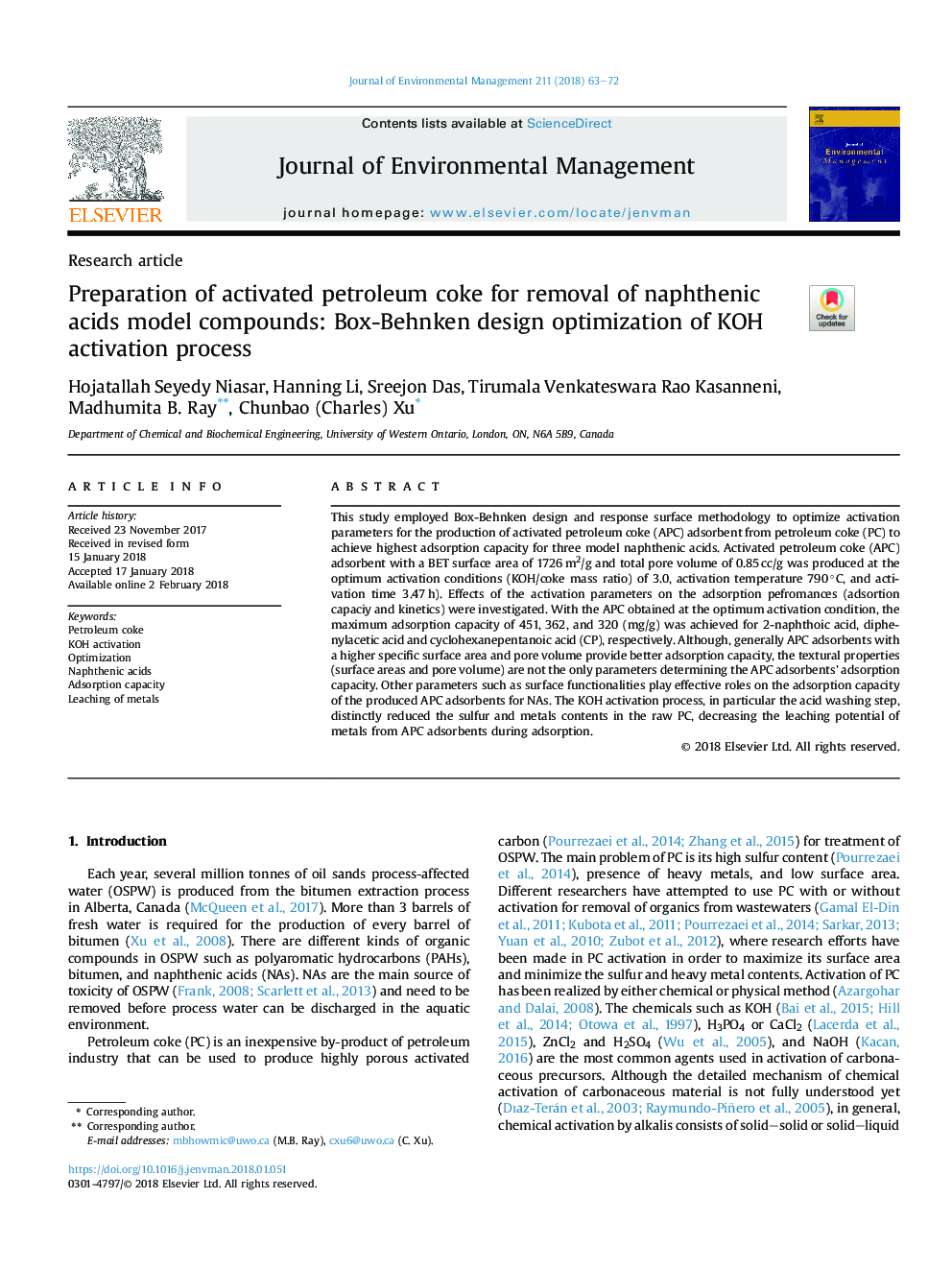| Article ID | Journal | Published Year | Pages | File Type |
|---|---|---|---|---|
| 7477988 | Journal of Environmental Management | 2018 | 10 Pages |
Abstract
This study employed Box-Behnken design and response surface methodology to optimize activation parameters for the production of activated petroleum coke (APC) adsorbent from petroleum coke (PC) to achieve highest adsorption capacity for three model naphthenic acids. Activated petroleum coke (APC) adsorbent with a BET surface area of 1726â¯m2/g and total pore volume of 0.85â¯cc/g was produced at the optimum activation conditions (KOH/coke mass ratio) of 3.0, activation temperature 790â¯Â°C, and activation time 3.47â¯h). Effects of the activation parameters on the adsorption pefromances (adsortion capaciy and kinetics) were investigated. With the APC obtained at the optimum activation condition, the maximum adsorption capacity of 451, 362, and 320 (mg/g) was achieved for 2-naphthoic acid, diphenylacetic acid and cyclohexanepentanoic acid (CP), respectively. Although, generally APC adsorbents with a higher specific surface area and pore volume provide better adsorption capacity, the textural properties (surface areas and pore volume) are not the only parameters determining the APC adsorbents' adsorption capacity. Other parameters such as surface functionalities play effective roles on the adsorption capacity of the produced APC adsorbents for NAs. The KOH activation process, in particular the acid washing step, distinctly reduced the sulfur and metals contents in the raw PC, decreasing the leaching potential of metals from APC adsorbents during adsorption.
Related Topics
Physical Sciences and Engineering
Energy
Renewable Energy, Sustainability and the Environment
Authors
Hojatallah Seyedy Niasar, Hanning Li, Sreejon Das, Tirumala Venkateswara Rao Kasanneni, Madhumita B. Ray, Chunbao (Charles) Xu,
